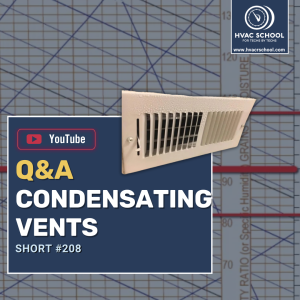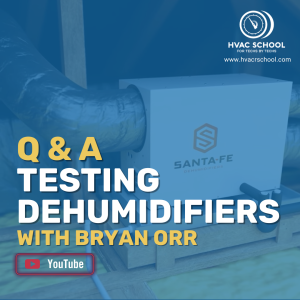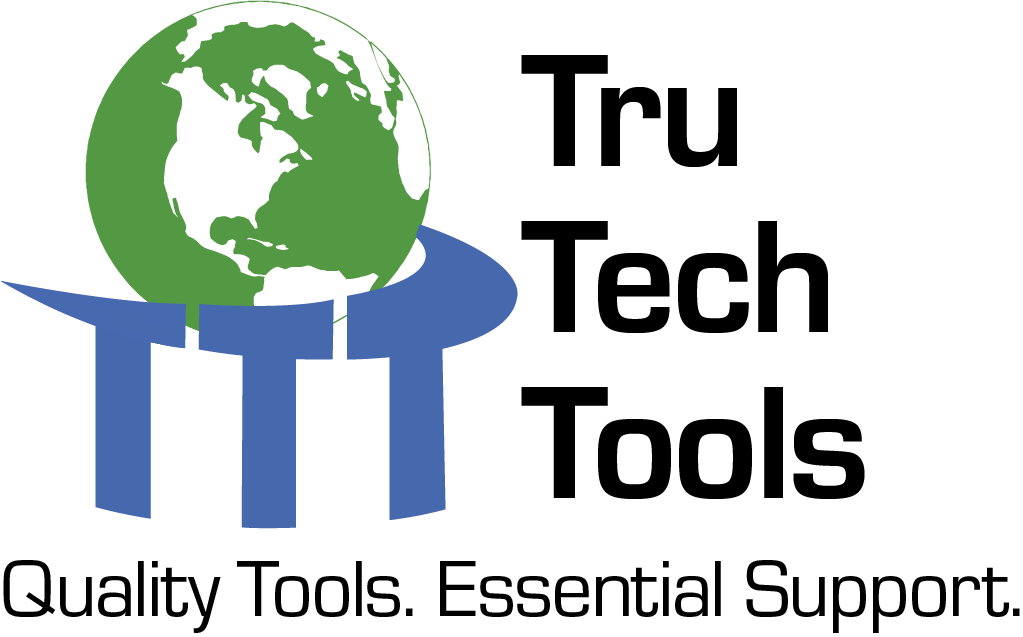BACK
 To Glass Ceilings And Those Who Lend Us Their Hammers
To Glass Ceilings And Those Who Lend Us Their Hammers
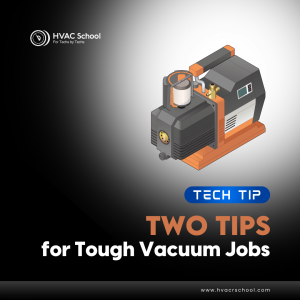 Two Tips for Tough Vacuum Jobs
Two Tips for Tough Vacuum Jobs
 Is Value Perceived?
Is Value Perceived?
 What to Do with Your Micro-Manometer
What to Do with Your Micro-Manometer
 Ventilation Strategies: ERVs, Dehumidifiers, and More
Ventilation Strategies: ERVs, Dehumidifiers, and More
 How Do Communicating Systems Work?
How Do Communicating Systems Work?
 Manual J Field Data: Windows
Manual J Field Data: Windows
 Troubleshooting 90%+ Gas Furnaces
Troubleshooting 90%+ Gas Furnaces
 Practical Uses of Combustion Analysis
Practical Uses of Combustion Analysis
 MCA is 27 and the Breaker is a 50A – Short #219
MCA is 27 and the Breaker is a 50A – Short #219
 Deploying Surge Protection & Voltage Monitoring w/ DITEK
Deploying Surge Protection & Voltage Monitoring w/ DITEK
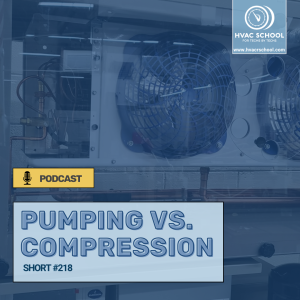 Pumping vs. Compression – Short #218
Pumping vs. Compression – Short #218
 Building Tech Confidence w/ Refrigeration Mentor
Building Tech Confidence w/ Refrigeration Mentor
 Molecular Transformator – Short #217
Molecular Transformator – Short #217
 Surge Protection Basics w/ DITEK
Surge Protection Basics w/ DITEK
 Q&A – Am I Toxic For Caring? – Short #216
Q&A – Am I Toxic For Caring? – Short #216
 App Based HVAC Learning
App Based HVAC Learning
 Q&A – Apps for Doing Proper Loads – Short #215
Q&A – Apps for Doing Proper Loads – Short #215
#hvac
Tech Tips:

This tech tip was written by Jennifer Manzo, an HVAC technician and the founder of the HVA-Chicks coalition, which offers tech support and training as well as resources for women in the industry. She was one of our panelists on this year's Women's Panel at the symposium and was recently featured on a livestream and […]
Read more

In the last year or so, I have had a couple of puzzling experiences related to pulling a vacuum. These instances have left me with questions and clues where I thought I had given up on understanding a certain vacuum situation. Typically, if I’ve had a hard time achieving a proper vacuum, I would be […]
Read more

The other morning, I was scrolling through HVAC Facebook groups when I came across a post from a homeowner. He was requesting recommendations for a book that would teach him how to design and install a new HVAC system, complete with ductwork, in his home. Immediately, my HVAC career flashed before my eyes like a Christian reliving […]
Read more

Imagine this: you are pulling into your driveway from a long day at work, and you see a package waiting for you on your porch. You jump out of your truck and trip over the rose bush while running to see if this is what you have been waiting for. Upon closer inspection, you realize that the […]
Read more

This tech tip recaps the livestream by the same name, featuring HVAC School contributors Matt Bruner and Adam Mufich, as well as special guests Corbett Lunsford and John Semmelhack. You can watch that livestream on our YouTube channel HERE, and you can learn more about the great educational opportunities Corbett has to offer at https://buildingperformanceworkshop.com/. […]
Read more

This tech tip recaps the livestream by the same name, featuring HVAC School contributors Matt Bruner and Adam Mufich, as well as special guest Steve Cook from Hisense. You can watch that livestream on our YouTube channel HERE. We also owe special thanks to Roman Baugh, who added some extra information on the topic. Communicating […]
Read more

A manual J load calculation will require you to input the U-value for the windows or “fenestrations” on the house. Fenestration is a fancy construction word for window. Figuring out the U-value and SHGC of a window on an existing home is very difficult. But first, let’s dive into what the terms U-value and SHGC […]
Read more

This tech tip recaps the livestream by the same name, featuring HVAC School contributors Matt Bruner and Adam Mufich and special guest Ty Branaman. You can watch that livestream on our YouTube channel HERE and visit Ty’s at https://www.youtube.com/@love2hvac. While 80% gas furnaces are relatively commonplace in the Southeastern United States, where HVAC School is […]
Read more

This tech tip reviews the live stream by the same name aired on November 1st, 2023. You can watch the full live stream HERE. We want to give special thanks to the guests: Jim Bergmann, Jim Davis, Tony Gonzalez, Louise Kellar, Bill Spohn, and Tyler Nelson! Gas furnaces (or any combustion equipment) create a controlled […]
Read more
Videos:
Podcasts:

In this short podcast episode, Bryan and Mike from DITEK talk about what to do in tricky electrical scenarios, such as when the MCA is 27 and you have a 50A breaker. When you size an HVAC system for compatibility with voltage monitors, like the DITEK Kool Guard, you need to pay attention to […]
Read more

Bryan discusses surge protection devices (SPDs) with Mike from DITEK, focusing on practical applications for HVAC contractors and how to provide value to clients. Mike emphasizes that surge protection is essential for modern HVAC systems, particularly given that they are typically the most expensive appliance in a home and increasingly rely on sophisticated electronic […]
Read more

In this short episode, Bryan clears up the confusion behind pumping vs. compression. Pumping is usually associated with liquid. Liquid, like vapor, is a fluid, but it's a lot denser and is essentially incompressible because the molecules are close together. Liquid volume varies based on temperature and density, but we can't squish the molecules […]
Read more

Trevor Matthews returns to the HVAC School Podcast to discuss building tech confidence and personal growth in the HVAC and refrigeration industry. The conversation explores the transformative power of self-investment, continuous learning, and maintaining a positive mindset. Trevor shares his personal journey from a hesitant technician to a successful business owner, highlighting the importance […]
Read more

In this short podcast episode, Bryan talks about the CPS Molecular Transformator and what it does. The Molecular Transformator is a version of a tube-in-shell heat exchanger, which is a method of exchanging heat from one fluid medium to another fluid medium. Tubes containing a fluid pass through a shell containing water or glycol, […]
Read more

In this enlightening episode, we sit down with Mike, a 20-year veteran from DITEK, a leading American manufacturer of surge protection devices based in Largo, Florida. The conversation begins with a brief discussion about recent hurricane impacts in the Tampa Bay area, where DITEK maintains its 65,000-square-foot manufacturing facility. Mike shares how the company, […]
Read more

Bryan answers a listener-submitted question: “Am I toxic for caring?” He gives advice on how to maintain professional relationships while still maintaining very high standards of quality for your own work. Having high standards is great, but it can be frustrating when you perceive coworkers as having lower standards than you. A poor-quality end […]
Read more

Ruchir Shah joins the podcast to share his journey into HVAC education technology and the founding of SkillCat, a comprehensive training platform for skilled trades. As a five-time entrepreneur in educational technology, Ruchir's path to HVAC was influenced by his earlier work studying the BP oil spill and developing training solutions for oil and […]
Read more

In this short Q&A podcast, Bryan answers a listener-submitted question about apps for doing proper loads. Fred specifically asks about apps or charts that can help an HVAC contractor determine the insulation value of a home without assuming numbers or drilling into walls during load calculations. Load calculations account for all the ways that […]
Read more

